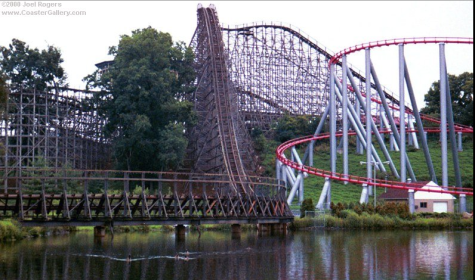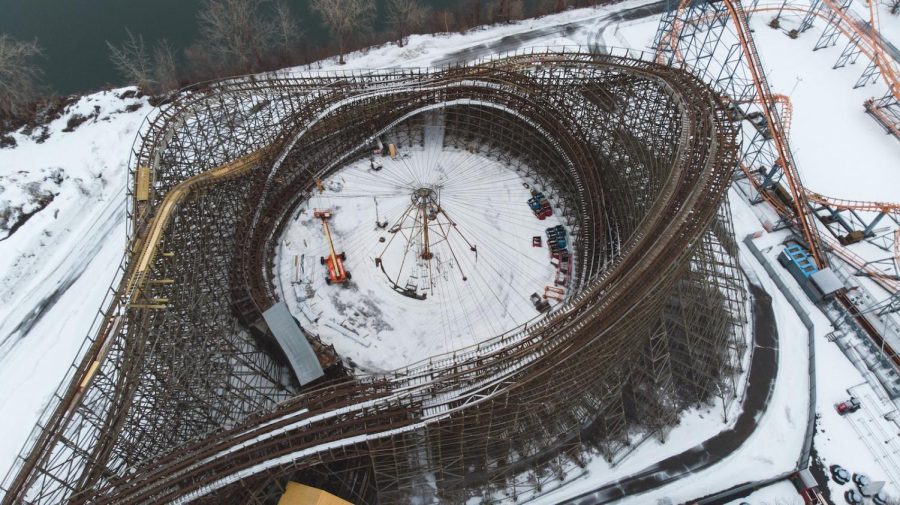Wooden Roller Coasters
The pros and cons of Wooden Coasters
Introduction
Wooden roller coasters are arguably the most iconic roller coasters in the world. Ever since the 1800s, these coasters are still some of the most popular attractions at numerous major amusement parks. Being built by several distinct companies over the last century, this coaster type looks immensely different today than it did back then. Many ancient wooden coasters maintain the same level of popularity today as they did nearly 100 years ago, while countless others age to a point of disrepair. Over the years, they have become outclassed by their steel counterparts, forcing manufacturers to find innovative, new ways to build these legendary thrill machines.
Brief History
Philadelphia Toboggan Coasters, or PTC, has built some of the world’s most recognizable wooden roller coasters. Some of these iconic attractions include Phoenix, which earned the Golden Ticket Award for best wooden coaster, and Comet, Hersheypark’s oldest, currently operating roller coaster. Although PTC dominated the early to mid 1900s, other coaster manufacturers began to gain traction. In the late 1970s, Charles Dinn designed The Beast, the world’s tallest, fastest, and longest wooden roller coaster. Charles Dinn went on to start the Dinn Corporation, a now defunct wooden coaster manufacturer that built a small number of large, imposing, and record-breaking rides such as Hercules, located at Dorney Park, which held the record for the largest drop on a wooden coaster until it was removed due to its “back-breaking” roughness.
Roughness
This is a major problem for wooden coasters, as they cannot be built too tall, too fast, or too complex because they will risk becoming rough and, subsequently, unpopular. These limitations are what led to the creation of new wooden coaster manufacturers in the 1990s and 2000s that used state-of-the-art building practices that allowed for more intricate designs. One of these companies was Great Coasters International, a renowned m anufacturer that built some of the world’s most noteworthy wooden coasters, including Mystic Timbers at Kings Island, Lightning Racer at Hersheypark, and Gold Striker at California’s Great America. Another innovative manufacturer, The Gravity Group, even built a wooden coaster featuring an inversion, known as Mindblower, at Fun Spot America. Although these designs were more advanced, the coasters still became rough over time and required retracking to stay smooth.
anufacturer that built some of the world’s most noteworthy wooden coasters, including Mystic Timbers at Kings Island, Lightning Racer at Hersheypark, and Gold Striker at California’s Great America. Another innovative manufacturer, The Gravity Group, even built a wooden coaster featuring an inversion, known as Mindblower, at Fun Spot America. Although these designs were more advanced, the coasters still became rough over time and required retracking to stay smooth.
Conclusion
Wooden roller coasters are iconic. Although they are overshadowed by their steel counterparts, they still have their place in any amusement park’s lineup. Wooden coasters are uniquely rough when compared to steel coasters which, when it is not too severe, adds an overabundance of character to the ride experience.
Related Stories
https://en.wikipedia.org/wiki/Wooden_roller_coaster
https://coasterpedia.net/wiki/Wooden_roller_coaster
https://www.philadelphiatoboggancoastersinc.com/active-rides/historic-wooden-roller-coasters/
https://en.wikipedia.org/wiki/Side_friction_roller_coaster
https://coasterpedia.net/wiki/Side_Friction_roller_coaster















